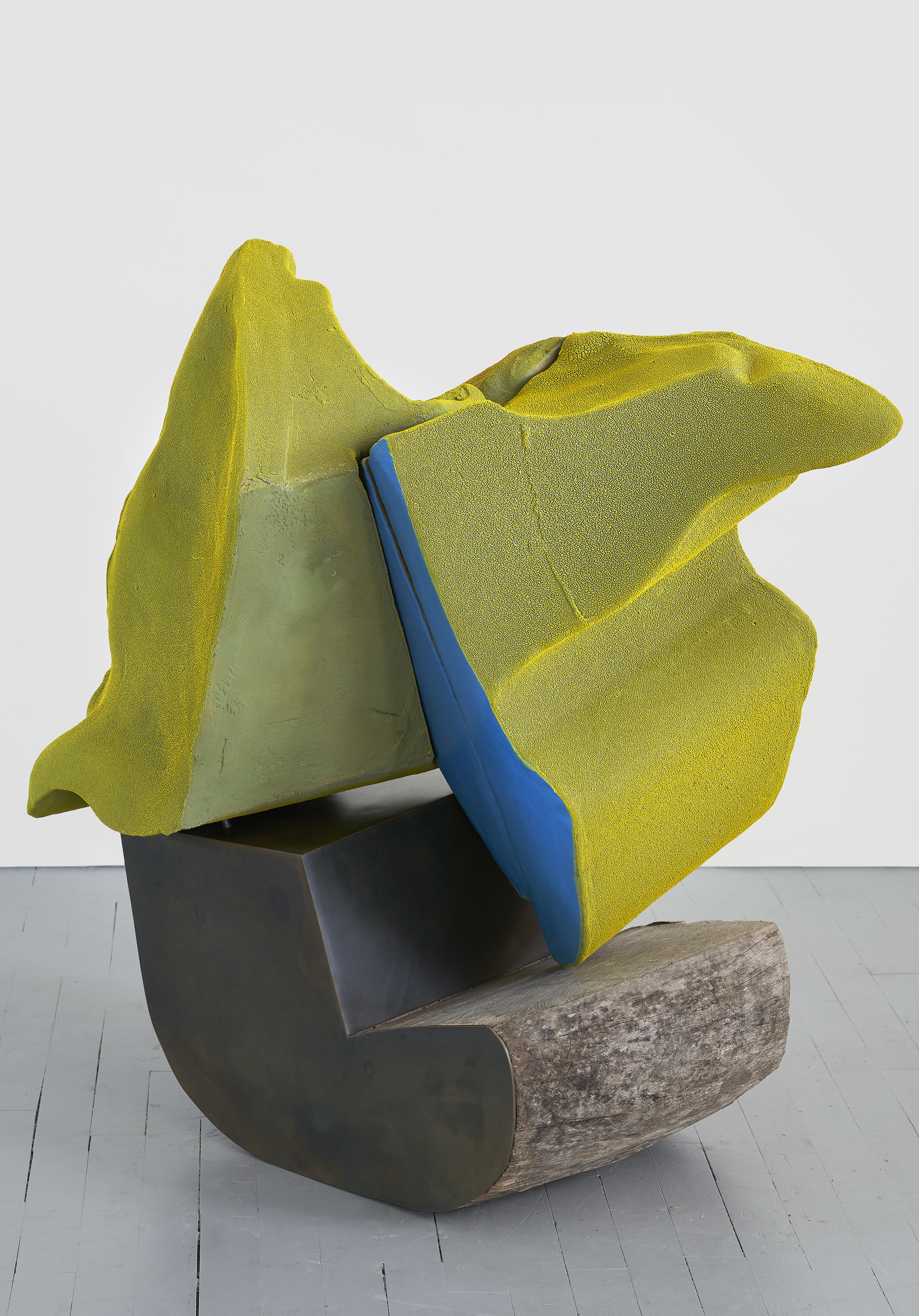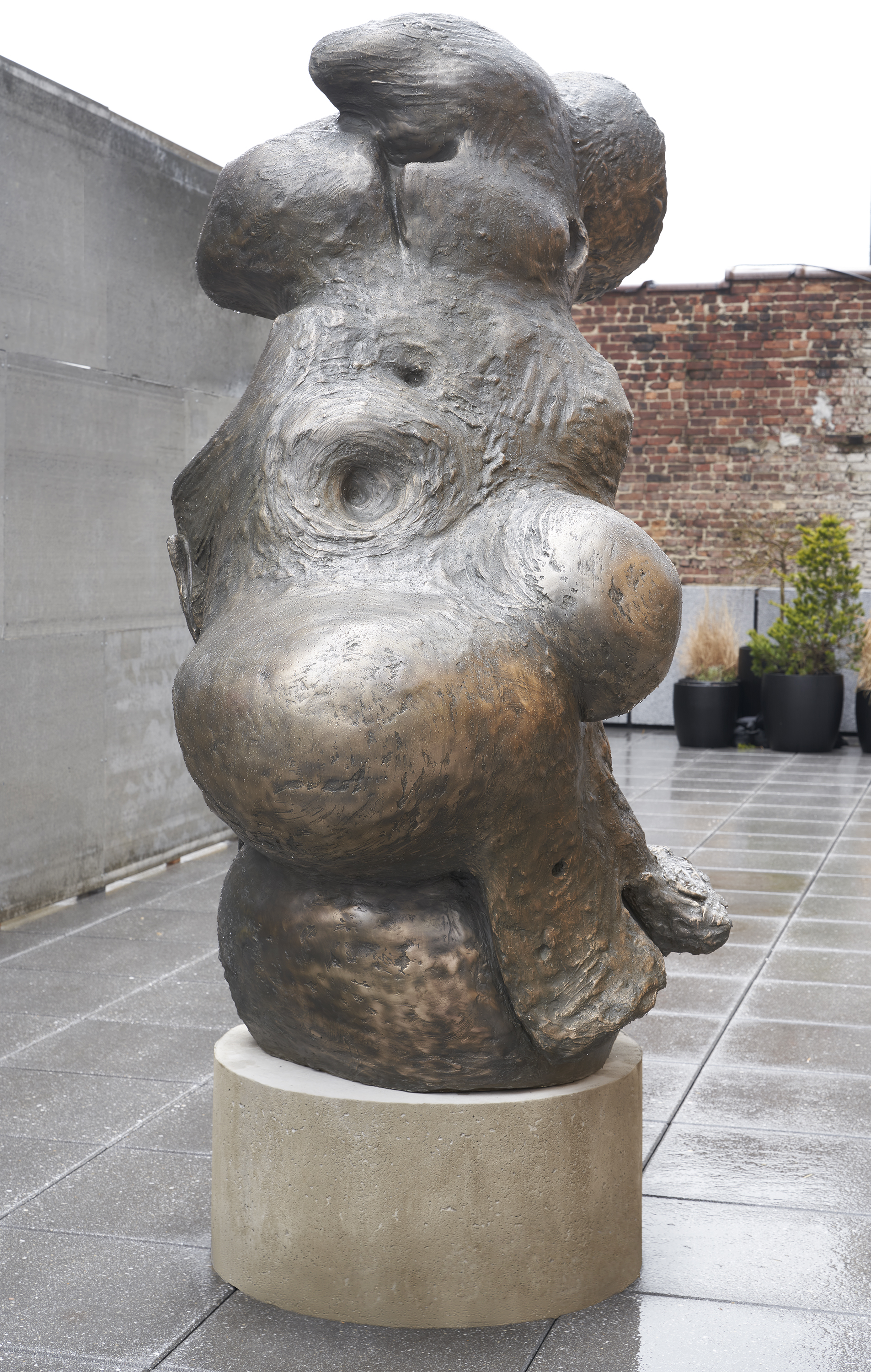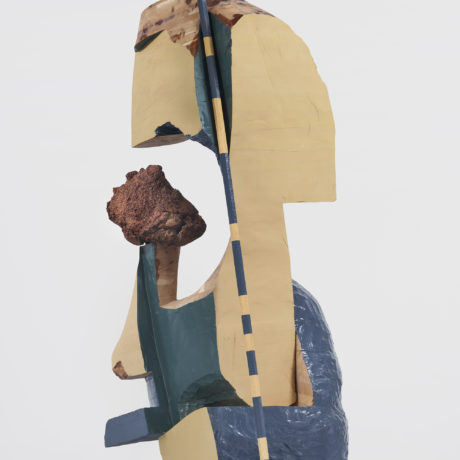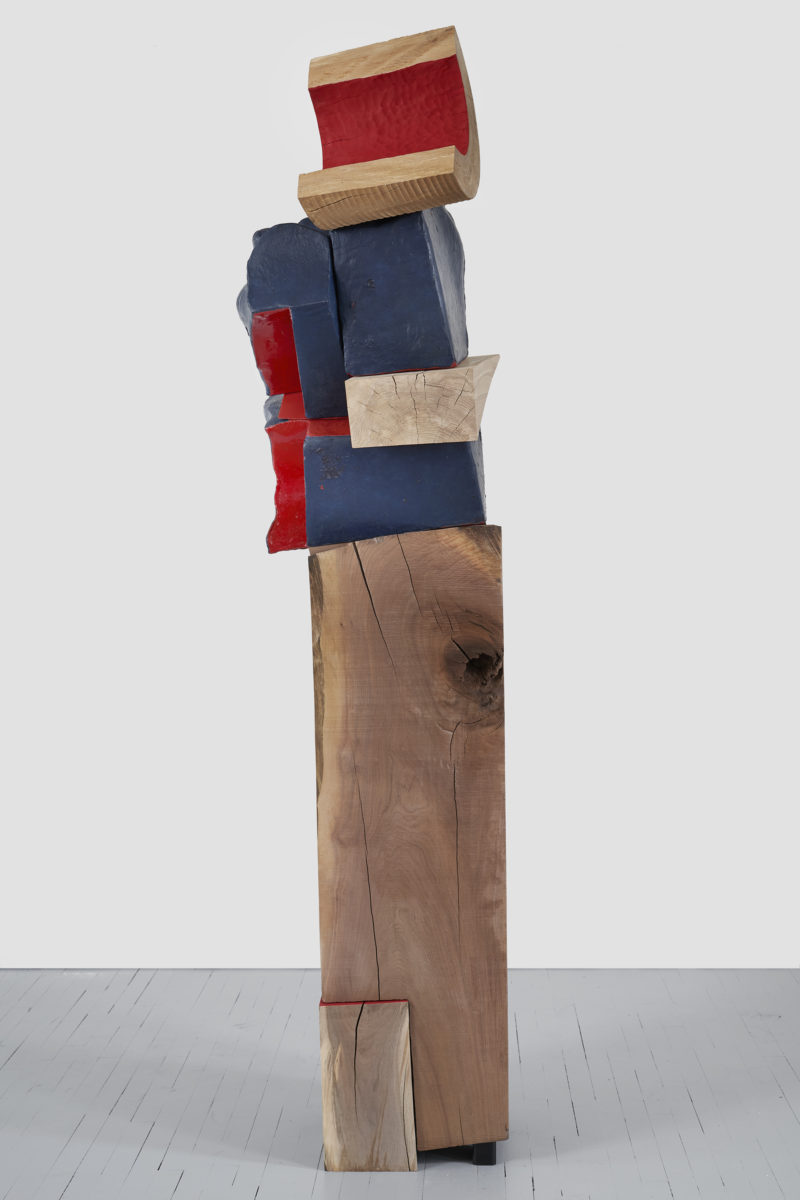
Arlene Shechet’s work is not easy. In many ways, her mentality is more in line with the disposition of a poet: nothing is fixed, the nature of the object is left open and afforded its own autonomy. “I decidedly try to work against a single idea,” she tells me. “I try to avoid any punchline, or anything too unifying. I want the things to be what they are.”
For her current exhibition, Skirts, which is being held at the newly inaugurated Pace Gallery flagship space in New York—a colossal structure that scales eight stories and verges on the formidable presence of a museum institution—Shechet gifts her audience with eighteen composite sculptures, broadly configured in a staccato-like formation throughout the space to emphasize their singular nature. The dance between works allows for them to be viewed from myriad sight lines, offering instances of discrete revelation: “For me, there is never a front and a back of an artwork. I want to be able to offer as many views as possible and have space around the pieces so the viewer can move.” Unlike the frontal requirements of observing painting, Shechet contends that there is no correct way to view sculpture. “It’s circular as opposed to linear. I’m trying to enforce the circularity and the idea of movement within the piece.”
- Left: In My View, 2020; Right: The Crown Jewel, 2020
When asked to provide a thematic trace to the show, Shechet is reluctant: “If anything defines the whole exhibition, it’s that each work is unique.” If there must be a unifying element, Shechet offers the notion that “All the works are part of a language of ideas, related to the most basic way we live in our bodies and exist in the world.”
The sculptures in Skirts mimic the sliding scale of the human form. For the artist, her sculptures are “other bodies” which in their echoed somatic shape, allow for “a relationship with the viewer that is intimate”. To inhabit the gallery is to be in their presence.
“There’s a casualness to the way I want them to look, which means that the engineering is killer”
Like bodies, Shechet’s sculptures sometimes appear to be caught in precarious physical situations, encountered in a moment between motion and stillness. In the work, Deep Dive (2020), two canary yellow boulders with bright blue facets are poised on a wood base that appears too curved for safety. The configuration reads as informal, an affect that is challenging to pull off. For Shechet, this sense of happenstance is essential: “I like putting the work together and having it exist in a state of shifting possibilities. There’s a casualness to the way I want them to look, which means that the engineering is killer. It’s so much harder to make something look unburdened. I want the sense of freedom and looseness, yet it has to be whole.”

A smattering of works, such as Ripple and Ruffle, and Grammar (both 2020) are totemic, scaling the vertical through a piling of disparate elements such as hardwood, glazed ceramic and steel. Others, such as Guessed It and Rocks Rocker (both 2020) embrace gravitational inevitability and collapse into formlessness. In the case of Guessed It, an amoebic body made of glazed ceramic flaccidly droops over the edge of a discrete steel base. The ceramic flesh is a technicolor of soft hues, daubs of cerulean mottled on a fawn colored foundation. As the ceramic topples off the edge of its steel stand, it unwittingly reveals a bubblegum pink underside, hollowed and protruding at varied instances.
Counter to the human-sized sculptures which inhabit the interior gallery spaces, a nebulous bronze mass entitled Oomph (2020), has set up camp on Pace’s second floor terrace. The globular cluster is undeniably figurative—one can discern a navel here, a thigh there—despite the lack of an articulated anatomy. The mashed-up form is like a painted figure by Francis Bacon come to life, but in lieu of a violent grimace there is a suggestion of rotund jolliness, a figure that is comforted by their own solidity. In considering the work in relation to the sculptures that are confined to the gallery’s internal white cube, Oomph seems like the corpulent sibling that was shoved out the nest.
“I would say physical comedy is the language that I love”
Such imaginary narratives are easily facilitated by the evocative nature of Shechet’s titles. The exhibition name itself, Skirts, invokes the kind of word play that is characteristic of the words and phrases ascribed to Shechet’s forms. It’s multifarious definition as noun, verb, and derogatory slang make it ideal in framing the way one should approach Shechet’s work. It can be many different things simultaneously; no one definition is principal. Again, Shechet’s proximity to the ways of the poet is clear: “I see words as being another material, I try not reach for a title that is descriptive. I’m not trying to make it be an explanation. It’s another element. I think words are things.”

This sense of ambiguity, which is present in both the physical and linguistic aspects of Shechet’s work, imbibes the artist’s sculptures with a pronounced sense of humour. For Shechet personally, it is in the form itself that the humour lies: “I would say physical comedy is the language that I love. It’s almost like the tragedy and the comedy merging in the way we must exist in the body, and the way we exist with others in their bodies.” Shechet’s thinking alludes to the philosophy of Henri Bergson, who in describing the nature of the comic, emphasizes that it is “strictly human”. It is the sense of not being in control of our bodies, the “involuntary” acts in which we catch ourselves slipping up, tongue tied and bumping into doorways, that reveals our status as defective machines. If these actions could be expressed in abstract form, they may look something like the sculptures of Arlene Shechet.








